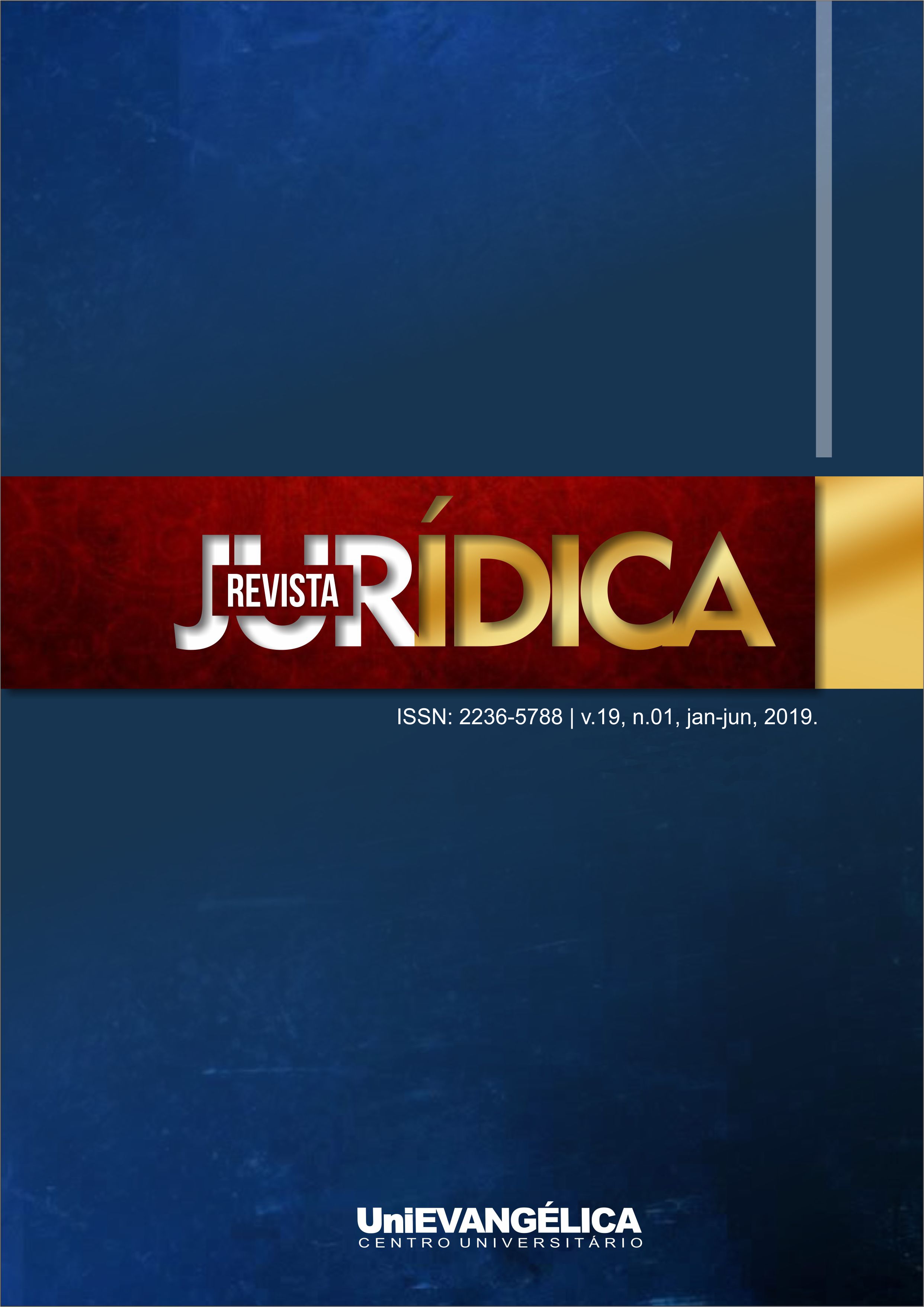A Automutilação Sob A Ótica Do Direito Penal: Crime Ou Um Direito Fundamental?
DOI:
https://doi.org/10.29248/2236-5788.2019v19i1.p33-46Palavras-chave:
Automutilação, Direito penal, Dignidade humana, ECA, Conduta lesivaResumo
Este artigo dá destaque à problemática da automutilação entre crianças e adolescentes, por se tratar de uma prática recorrente na sociedade contemporânea. Partindo de considerações sobre a origem e subcategorias do ato de se automutilar, desenvolvemos uma reflexão sobre a proteção dos bens jurídicos tutelados, com especial ênfase ao núcleo essencial dos direitos fundamentais – a vida –, o qual deve ser interpretado de forma extensiva, uma vez que estes direitos fundamentais buscam garantir o cumprimento do preceito constitucional mais importante: a dignidade do homem, fonte primeira de atenção do ordenamento jurídico. Como tentativa de fazer dialogar autores da Psicologia e Direito, fazemos uma revisão bibliográfica do aporte teórico de cunho jurídico, analisando Costa (2010) e Greco (2010-2012) numa intersecção com textos de autores de concepção psicológica, como Giusti (2017) e Favazza (1996, 2007, 2009), no intuito de desvelarmos importantes aspectos no tocante à proteção do sujeito inimputável, a criança ou adolescente, e ressaltar o papel da jurisdição no cumprimento do que estabelece o Estatuto da Criança e do Adolescente - Lei 8069/90 acerca da Política de atendimento à criança e ao adolescente de maneira a realmente garantir a plena efetivação dos direitos infanto-juvenis. Por fim, procuramos chamar a atenção para a complexidade do comportamento automutilador e da necessidade de se viabilizar normas protetivas aos sujeitos praticantes deste ato, bem como a urgência de se criminalizar aqueles que de alguma forma incentivam a automutilação, no sentido de coibir essa prática.
Referências
ASCENSÃO, J. de O. Direito Civil. Teoria Geral. Introdução. As Pessoas. Os Bens. Volume I. 2ª edição. Editora Coimbra, 2012.
ÁVILA, H. Teoria dos princípios – da definição à aplicação dos princípios jurídicos. São Paulo: Malheiros Editores, 2003.
BIRMAN, J. Dor e sofrimento num mundo sem mediação. Conferência proferida nos Estados Gerais da Psicanálise: II Encontro Mundial, Rio de Janeiro, 2003.
BRASIL. Constituição (1988). Constituição da República Federativa do Brasil. Brasília, DF: Senado Federal: Centro Gráfico, 1988.
BRASIL. Código Civil. Organização de Sílvio de Salvo Venosa. São Paulo: Atlas, 2003.
BRASIL. Código Penal. Decreto-Lei nº 2.848, de 7 de dezembro de 1940. Vade mecum. São Paulo: Saraiva, 2017.
BRASIL. Estatuto da Criança e do Adolescente, Câmera dos Deputados, Lei no 8.069, de 13 de julho de 1990. DOU de 16/07/1990 – ECA. Brasília, DF.
BRASÍLIA, DF. Senado Federal. Projeto de Lei do Senado PLS nº 664, de 2015. Altera o Estatuto da Criança e do Adolescente (ECA) para tipificar o crime de induzimento, instigação ou auxílio à automutilação de criança ou adolescente. Disponível em: <https://legis.senado.leg.br/sdleg-getter/documento?dm=3629383&disposition=inline>. Acesso em: 26 nov. 2011. Texto Original.
COSTA, A. Tatuagens e Marcas Corporais. São Paulo: Casa do Psicólogo, 2010.
COSTA, J. de F. «Em redor da noção de ato médico», in Costa, José de Faria/ Godinho, Inês Fernandes, As Novas Questões em Torno da Vida e da Morte em Direito Penal. Uma perspectiva integrada, Coimbra: Coimbra Editora, 2010.
FAVAZZA, A. Review of treating self-injury: a practical guide. Journal of Nervous and Mental Disease, 2007.
FAVAZZA, A. R. Bodies under Siege: Self-mutilation and Body Modification in Culture and Psychiatry. 3th ed. Baltimore: JHU Press, 1996.
FAVAZZA, A.R. Cultural Understanding of Nonsuicidal Self-Injury. In: Nock,
Matthew K. (Ed.), Understanding nonsuicidal self-injury: Origins, assessment, and treatment. pp. 19-35. Washington DC, US: American Psychological Association, 2009.
FERRAJOLI, L. Direito e razão – teoria do garantismo penal. Trad. Ana Paula Zomer e outros. São Paulo: Madri, Ed. Revista dos Tribunais, 2002.
GAUTHIER, M. Automutilation et autoérotisme. Topique, 2007.
GIUSTI, J.S. Automutilação: características clínicas e comparação com pacientes com transtorno obsessivo-compulsivo. 2013. 184f. Tese (Doutorado em Ciências) – Faculdade de Medicina da Universidade de São Paulo, Universidade de São Paulo, São Paulo, 2013. Disponível em: <www.teses.usp.br/teses/disponiveis/5/5142/tde-03102013-113540/pt br.php>. Acesso em: 14 nov. 2017
GRECO, R. Código Penal Comentado. 4. Ed. São Paulo: Impetus, 2012. GRECO, R. Curso de Direito Penal: parte especial.7. Ed. V. II, Niterói, RJ: Impetus, 2010.
JAFFRÉ, Y. Une épidémie au singulier pluriel réflexions anthropologiques autour des pratiques d’automutilation des adolescents. Corps: revue interdisciplinaire, 2(5), 75-82, 2008.
LAENDER, N. R. A construção do sujeito contemporâneo. Cogito, Salvador , v. 6, p. 81-83, 2004 . Disponível em <http://pepsic.bvsalud.org/scielo.php?script=sci_arttext&pid=S1519-94792004000100019&lng=pt&nrm=iso>. acessos em 26 nov. 2018.
MELLO, S. B. de A. Direito penal: sistemas, códigos e microssistemas. Curitiba: Ed. Juruá, 2004.
Organização Mundial de Saúde (2008) Classifcação Estatística Internacional de Doenças e Problemas Relacionados à Saúde – CID-10. Recuperado de http://bit. ly/2fZ7tji.
SCARAMOZZINO, S. Pour une approche psychiatrique de l’automutilation: implications nosographiques. Champ psychossomatique, 4(36), 25-38, 2004.
SMANIO, G. P. A tutela penal constitucional. Revista Brasileira de Ciências Criminais, São Paulo: Ed. Revista dos Tribunais, ano 10, n. 39, 2002.
STRONG, M. A Bright Red Scream: self-mutilation and the language of pain. London: Penguin Books, 1998.
TELES, N. M. Direito penal: parte geral. V. 4. São Paulo: Atlas, 2004.

